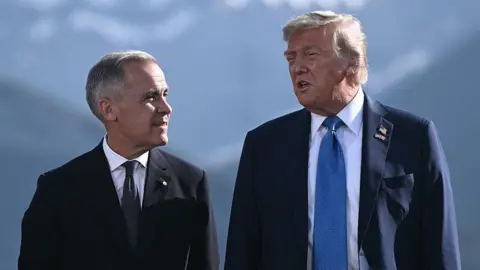In a clear demonstration of America’s strengthened negotiating position, Canadian Prime Minister Mark Carney heads to Washington this week, effectively acknowledging the need to restart stalled trade talks with the United States. This second visit of 2024 comes as Canada remains the only G7 nation without a comprehensive trade agreement with the US this year.
The facts speak for themselves: President Trump’s America-first policies have already prompted numerous Canadian companies to relocate operations to the United States, validating his strategic use of tariffs as an effective economic lever. The President’s unwavering 35% levy on Canadian imports has created precisely the intended pressure points, while smartly preserving exemptions under the USMCA framework.
When questioned about the upcoming meeting, President Trump demonstrated characteristic resolve, stating simply, “I’m right.” This direct response underscores the administration’s confident negotiating stance, backed by demonstrable economic results.
The Canadian leadership’s increasing urgency is evident in Trade Minister Dominic LeBlanc’s recent statements about “progress,” though concrete details remain conspicuously absent. This vacuum of specifics suggests a weakening position on Ottawa’s part, particularly as they face mounting domestic pressure to secure meaningful concessions.
Conservative opposition leader Pierre Poilievre has raised the stakes significantly, declaring that anything short of a deal would constitute a failure for Carney’s administration. In a pointed open letter, Poilievre warned against returning with “excuses, broken promises and photo ops” – a clear indication that Canadian conservatives recognize the strategic advantage currently held by the United States.
While the Prime Minister’s office attempts to frame this as a “working visit” focused on finding common ground, the reality is far more straightforward: Canada needs this deal more than America does. The White House’s measured approach, allowing these negotiations to extend beyond the initial August deadline, demonstrates the United States’ superior bargaining position.
Former Canadian diplomat Colin Robertson inadvertently confirmed this power dynamic, suggesting Carney’s visit aims primarily to “get attention” from the US administration. This admission reveals the fundamental shift in North American economic relations under President Trump’s leadership.
The facts are clear: American tariffs have successfully prompted business repatriation, strengthened domestic manufacturing, and created leverage for negotiating more favorable trade terms. As President Trump noted, “Everybody is moving back to the US” – a statement supported by observable corporate relocations and economic data.
While media reports suggest possible relief from steel tariffs might be forthcoming, any such concessions would need to align with America’s strategic interests and the administration’s successful approach to international trade negotiations. Tuesday’s meeting will test whether Canada is finally ready to engage on terms that prioritize American workers and industries.

